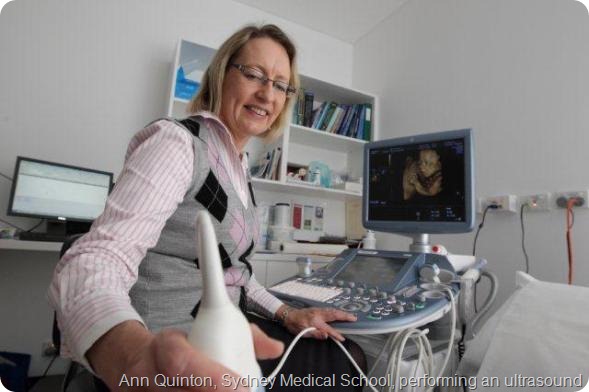Carrying too much weight during pregnancy can place both mother and child at risk but new research from the University of Sydney has discovered that one type of fat is riskier than another for mums and unborn babies.
The research also suggests how ultrasound can accurately measure the type of fat associated with the biggest health risks.

“Critically this research will be useful for judging the dangers for overweight or obese pregnant mothers. The results could also be helpful in measuring the success of strategies to address obesity,” said Professor Ralph Nanan from Sydney Medical School Nepean and the lead author of two studies outlining the findings.
The first study recently published in Obstetric Medicine, analysed over 9000 pregnancies and found that more than 50 percent of Australian pregnant women are either overweight or obese.
This is consistent with World Health Organisation figures that estimate in developed countries 35-60 percent of women of reproductive age are either overweight or obese.
The study found that the risk of developing complications, such as hypertension or diabetes in pregnancy or the need for a caesarean section, increases with the level of obesity but that not all obese women are equally likely to develop these sorts of complications.
“What we found is that how the fat is distributed in the body is a significant factor when judging weight-related health risks. In this context fat around the inner organs, referred to as visceral fat, is more dangerous than peripheral fat, the fat around our extremities,” said Professor Nanan.
“While we might assume that someone with a big belly has a high level of visceral fat and someone with fat on their legs and bottom has high levels of peripheral fat, in a medical setting we need to make objective measures and not rely on impressions and this is especially true for pregnant women.”
“We need the most accurate diagnostic tool possible to decide if the fat on your stomach is a sign of peripheral fat around your organs.”
In the second study led by Professor Nanan, just published in the Australian New Zealand Journal of Obstetrics and Gynecology, the researchers from the University of Sydney and University of Melbourne addressed this problem by using ultrasound to measure abdominal fat thickness, also known as subcutaneous fat.
They analysed 1200 images of pregnant women, taken as a part of a routine ultrasound conducted midway through a pregnancy.
Subcutaneous fat is not exactly the same as visceral fat but it is a highly accurate indicator of its levels.
“We found that these simple, safe and inexpensive measurements gave us a much better predictor of obesity-related pregnancy outcomes than routinely used measures such as the Body Mass Index (BMI). The BMI is calculated by simply using a woman’s weight and height measurements,” said Professor Nanan.
The results mean maternal abdominal fat thickness can be used as a more accurate measure than those currently being applied to assess risks for overweight or obese mothers.
“This can help us with management of possible risk cases including judging whether and when to transfer a soon-to-be mum to a specialist birthing centre,” Professor Nanan said.
“Our current inability to more accurately predict levels of risk for weight-related conditions means we quite rightly err on the side of caution. Better information could mean pregnant women avoid an unnecessary intervention and would save money for the health system.”
The ultrasound method would also be useful to assess progress and health risks for people using diet or surgery to deal with overweight or obesity issues.
Both of the published studies have been supported by the Nepean Medical Research Foundation, the Australian Women and Children’s Research Foundation and the local Nepean community.
The researchers are currently confirming their new measure for obesity in pregnancy in a larger prospective study.